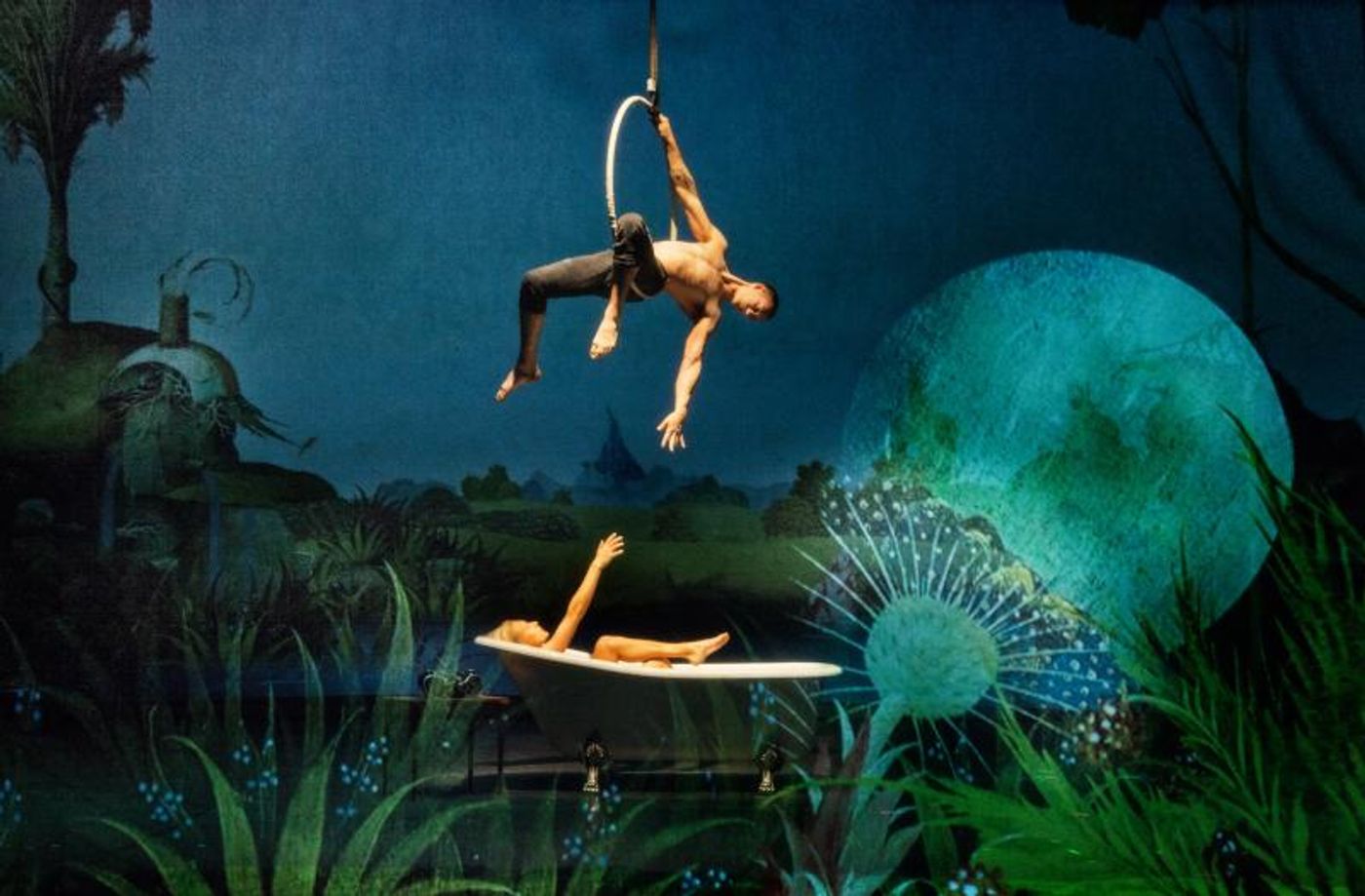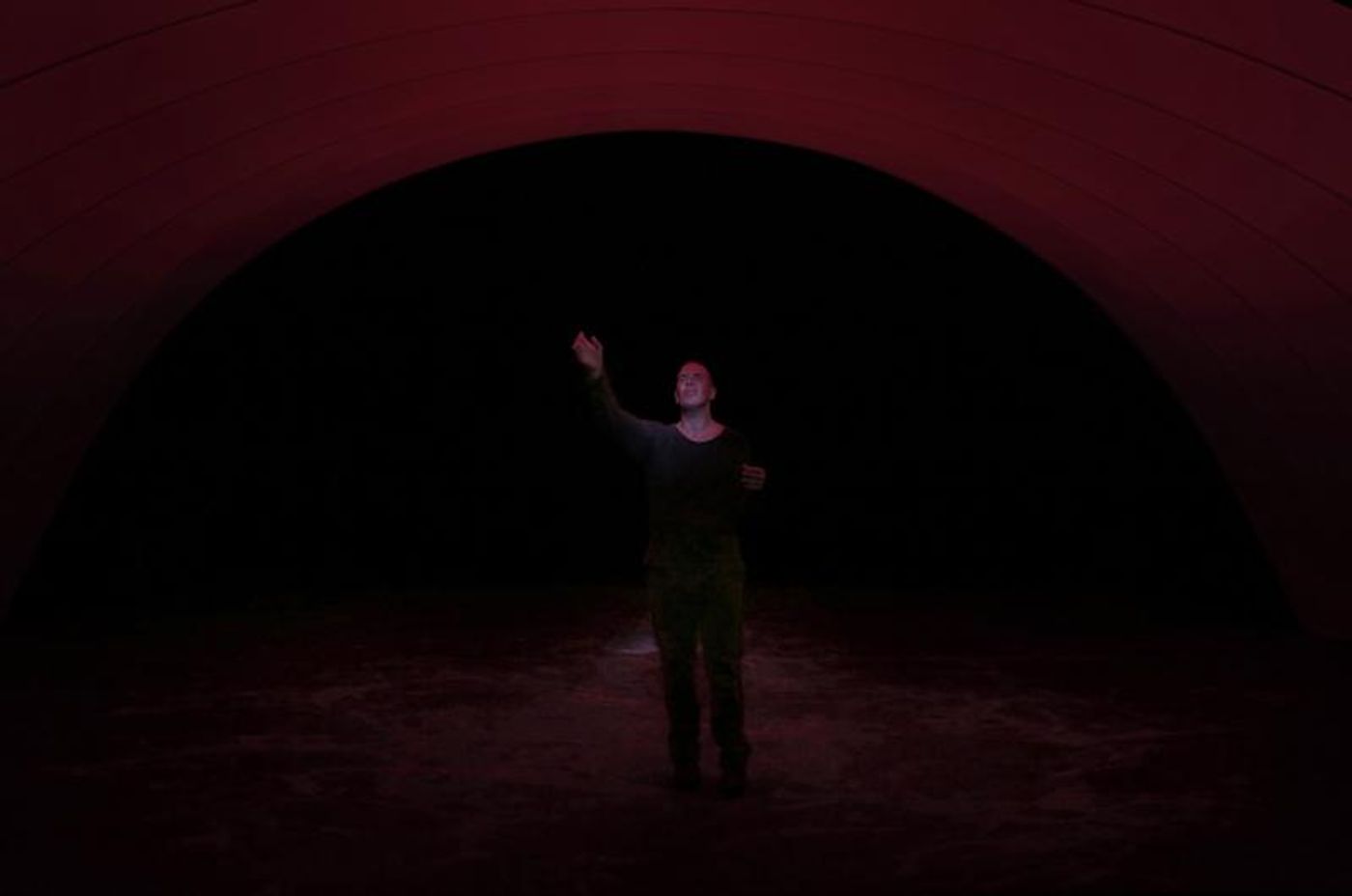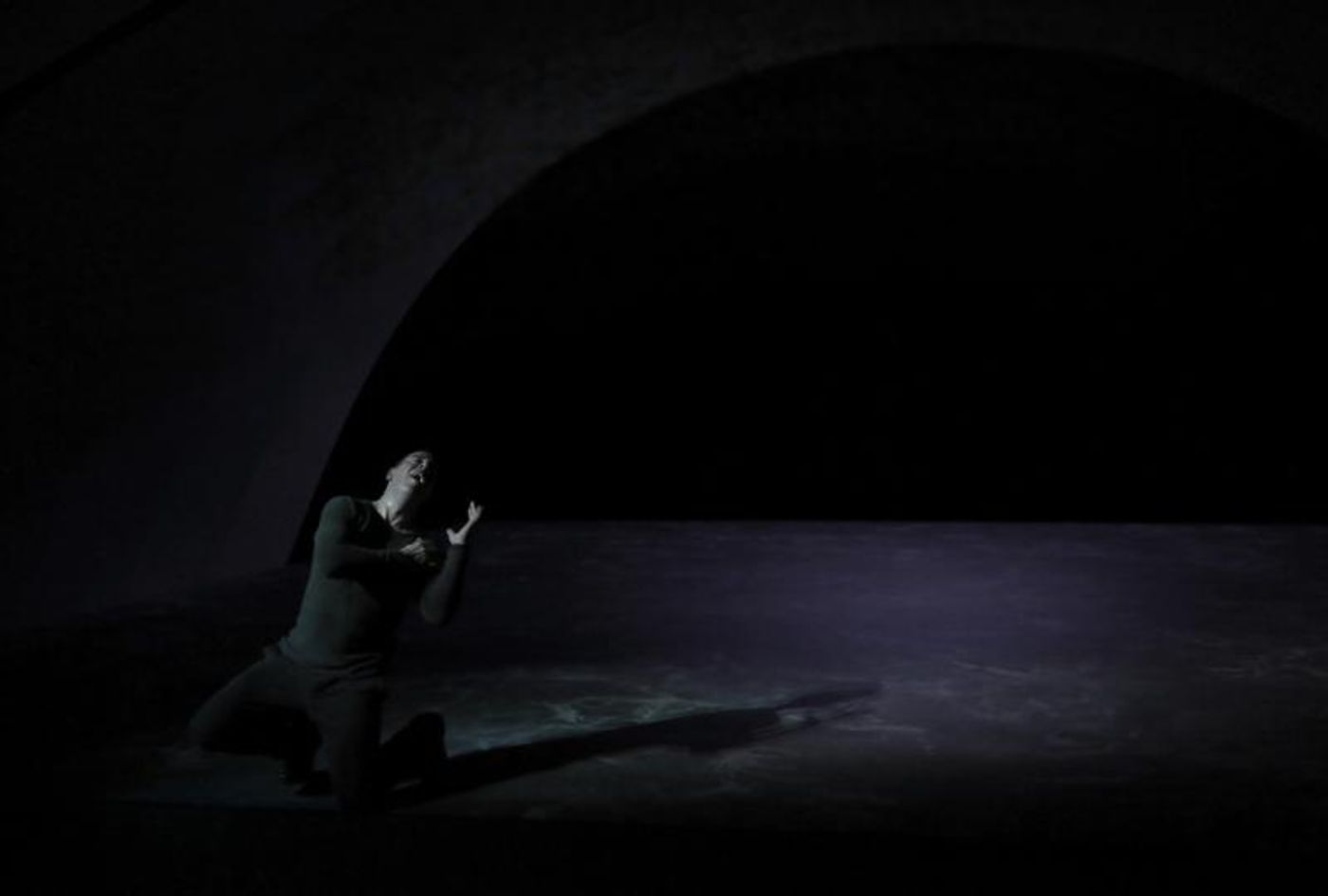Review: Two Dreams in a Roll - BOSCH DREAMS & DREAM AND DERANGEMENT at Hong Kong Cultural Centre (Hong Kong Arts Festival)

© Per Morten Abrahamsen
I do not know if it is a coincidence or not, but this year's selection of Hong Kong Arts Festival foreign programmes tend to have the nature of stream of consciousness, trying to turn the theatre as a space for imagination.
First, we had a ballet-attempt by Ballett Zürich, adapting ANNA KARENINA as a piece, by forming a dream-like sequence of dance, music and drama, to show the three key relationships in Tolstoy's epic.
Next, we had SHUKSHIN'S STORIES by Theatre of Nations (Russia) which demonstrates eight short stories by Vasily Shukshin, forming a post-dramatic theatre for the audience to embrace the characters and situations without seemingly a coherent structure (which is not true).
Even the acclaimed National Theatre production of THE CURIOUS INCIDENT OF THE DOG IN THE NIGHT-TIME, now still running at the Hong Kong Academy of Performing Arts, transforms the theatre space into the imaginative world of Christopher.
The theatre is mostly treated as a place or a device to escape, to witness something that is realistic but not real life. It is, after all, an illusion, yet the emotion it exudes is real. To think about it, it is the basis of dreams, something unrealistic that felt real and in the meantime illogical.
What interesting is that in the last weekend, two theatre shows in the Festival, both ran at the Hong Kong Cultural Centre, have their titles branded with the word 'Dream': BOSCH DREAMS and DREAM AND DERANGEMENT.
Not much is similar to these two pieces: BOSCH DREAMS, produced by Les 7 Doigts and Theatre Republique in Canada, is an acrobatic show done in the Grand Theatre, while DREAM AND DERANGEMENT, directed by the legendary 95-year-old French director Claude Régy, is an intimate ritual revealed in the Studio Theatre.
However, I find it fascinating that both pieces approach theatre and the performing space not in a sense of showcasing performances but embedding the performances by the performers as part of the piece to make illusions.

The title BOSCH DREAMS reflects that it is about Bosch dreaming instead of showing Bosch as a character who dreams in the piece. Thus, it suggests that what the audience is going to witness on stage is what Bosch dreams. Inspired by numerous of Bosch's paintings, BOSCH DREAMS delivers 80 minutes of intoxicating images, merging acrobatics with multimedia visuals, recreating the proscenium of the Grand Theatre as a canvas with layers.
Not only that, but BOSCH DREAMS also suggests the break of the linear timeline, that a professor in the contemporary era, speaking about Bosch's works, actually exists in the world Bosch creates in his period. Disjointed vignettes exude the meaning of the painting, yet they also combine a poetic narrative that does not need context.
I have to say, this is a brave approach to expand the dramaturgy of such a vision, to just invites the audience not to think but to enjoy the intoxication, to feel the festivity and the simulation from images after images based on the famous paintings. It does require exceptional skills in performances that are strong enough to hold the intensity of the piece, that it does not fall into the trap that it becomes just an acrobatic show with Bosch as a theme.
What BOSCH DREAMS delivers is successful, but barely. Most of the credit has to be given to Ange Potier who is, even though he is not credited as, the scenographer of the piece. Mr Potier's animations of Bosch's works really inflict the dreamy illusion that I do feel that the stage of the Grand Theatre is not what I am familiar. It does look like the animations are real on stage with the performers by using two projections to create 3-dimensional visuals.
However, the transitions between scenes are not fluid enough for me to really immerse into the 'dream', and I speculate the problem is that the piece does need an ensemble of strong actors. Most of the performers are acrobats in the show, but they are not fully utilised as acrobats.

© Pascal Victor
The performers merge their acrobatic movements with the animations to try and give Bosch's work into life. Yet, for not to be too showy on the acrobatic skills of the performers and omitting the dramaturgy of the piece, the acrobatic sets are quite ordinary and familiar with other acrobatic shows, and when these sets are not supported with adequate acting to suggest some kind of atmosphere, it fails to invite the audience to have an illusion.
In return, it diminishes the voices that BOSCH DREAMS ultimately wants to project. Even if it is only for simulating one's feelings through a dream-like experience, it still needs to be a fully impactful one.
Speaking of impact, DREAM AND DERANGEMENT, on the other hand, is really impactful by also creating illusions. By renovating the Studio Theatre as a black box, DREAM AND DERANGEMENT delivers a theatrical ritual of ultimate darkness and despair. Based on the poetry by Austrian poet Georg Trakl, the piece slowly pushes the audience to drown themselves in the water of poetics.
The stage scenography is simple but absolutely riveting, as it already presses the claustrophobic intensity by narrowing the proscenium with a dome-shaped ceiling, painting half of the proscenium with pitch black.
The whole one-hour piece is basically done in darkness. There is not a single bright light in the theatre that suggests the audience to see. The brightest device is the surtitle machine, but the production team cleverly includes the surtitles as part of the performance by not syncing the surtitles to the timing or the rhythm of the text delivery.
Yann Boudaud delivers Trakl's text with terrific skills, not just to embody the emotions of the poetry's voices but also to sustainably articulating the musicality of the text, to really asking the audience to listen attentively.
It is also a delight to witness a performer who can tweak the musicality of a language into another. Mr Boudaud speaks the translated Trakl's words in French, which is a language so different from the original German language. However, Mr Boudaud manages to profess the French language with strong German spirit that tends to make an illusion that he is speaking German, getting closer to how the original text is spoken.

© Pascal Victor
In return, I do not think the surtitles is that essential to this piece. I do not think I really need to know everything Mr Boudaud is saying, as I already can see Trakl's haunting images of death and grotesque through Mr Boudaud's voice and silhouette, with music and sound design rightfully supporting the energy and flow of the text and silences.
Lighting seamlessly changes to suggest different points of view for conceiving Mr Boudaud's performance. Fundamentally, the lights change for another chapter, but along with the low-key approach, it signifies the audience that it is an on-going journey, getting deeper and deeper into the narrative.
It is not until nearly the end when the dome-shaped ceiling is brightened with red light, a warm colour that has never been witnessed throughout the whole performance. It reminds the audience that behind these dark pages of Trakl's words, the vacuum of a bottomless pit hides a person who is full of passion, a person who is desperately trying to live.
What I see is the return of respect to the theatre as a sacred place, an altar for soul-searching rituals to the meaning of life and death that generates catharsis before the curtain falls. Even the lights at the audience slowly light up after the stage lights are fully dark after the curtain call. It is to create an illusion that what the audience has witnessed on stage might not be real (the ghosts in the theatre), but the emotion stays, just like having a dream.
It is interesting to see both 'Dreams' being approached in a similar way of treating the theatre as a place and space for illusions but delivered so differently in both terms of directions and results.
BOSCH DREAMS at Grand Theatre, Hong Kong Cultural Centre
DREAM AND DERANGEMENT at Studio Theatre, Hong Kong Cultural Centre
The 46th Hong Kong Arts Festival
Both closed 11th March 2018
Reader Reviews
Videos

